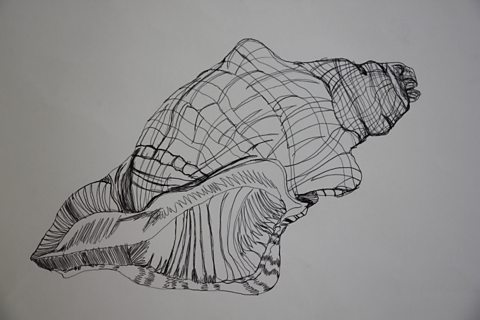Why do analytical drawing?

The more you look at your subject matterThe topic or objects chosen for representation in an expressive artwork. In portraiture, the person represented is referred to as the âsubjectâ or âsitterâ., the better your drawing will be. When you are making a closely-observed drawing you should spend more time looking than you do drawing. Remember to look carefully at:
- shapes
- spaces
- relationships between objects or parts of your composition
- light and shadows
- texture
- key details
- the whole
Consider important visual elementsElements used by artists and designers in different proportions and ways to create visual effects. The visual elements are: line; tone; colour; shape; form; pattern; and texture., such as line, tone, texture, color, shape and form. Each analytical drawingDrawing which is carried out to explore and record the detailed visual qualities of a subject. study could focus on different visual elements. Each visual element will suggest different materials and techniques that are suitable fo the quality being explored.
Primary sources
It is a good idea to work from a primary sourceSource material experienced first-hand by the artist. For example, a still life you have set up, a location you can visit in person or photographs you have taken. where possible. This means producing drawings by observing real objects or from drawing on location. An alternative would be to take your own photographs.
An advantage of using primary source rather than secondary sourceMaterial which has been generated by others. An example would be images found on the internet. is that the artist can explore the scene, object or person from many different viewpoints and in different conditions. The source material can also be revisited if an idea requires further investigation.
Secondary sources
Sometimes, artists and designers draw from found images, for example from books or the internet. Depending on the selected themeA topic selected for artistic representation. Themes are open to different interpretations and relate to what the piece is about rather than the specific things it shows., working from secondary source may be unavoidable. However, images should be carefully selected so that development of ideas is not limited later on.